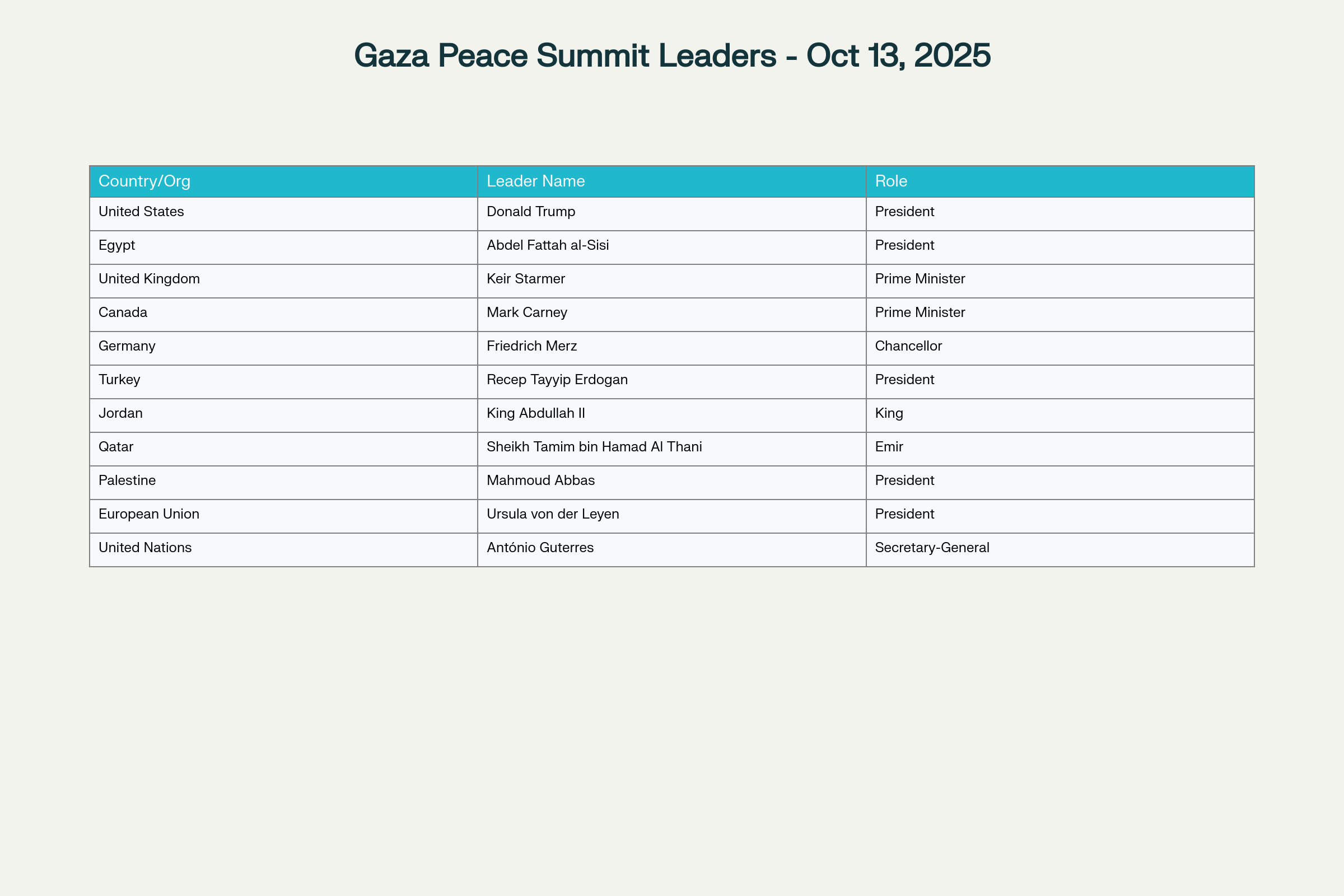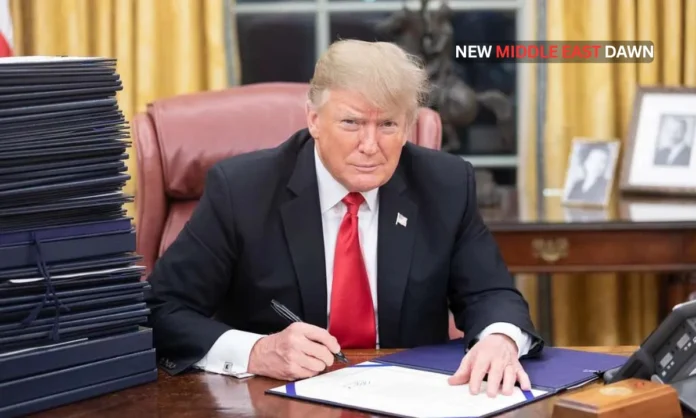Key Highlights:
- Trump Middle East ceasefire visit secures release of all 20 surviving Israeli hostages through diplomatic pressure
- International Gaza peace summit in Sharm el-Sheikh brings together 27 world leaders to endorse reconstruction framework
- Abraham Accords expansion strategy targets Saudi Arabia, Indonesia, and six additional nations for regional normalization
President Donald Trump’s historic Middle East ceasefire visit on October 13, 2025, marked a defining diplomatic triumph that secured the complete release of Israeli hostages and established a comprehensive framework for regional peace. The Trump Middle East ceasefire visit demonstrated unprecedented presidential engagement, with the President personally overseeing the implementation of his 20-point Gaza peace initiative that effectively ended two years of devastating conflict. This pivotal Trump Middle East ceasefire visit positioned the United States as the primary architect of Middle Eastern stability, with the President declaring “the war is over” during his triumphant address to the Israeli Knesset before proceeding to Egypt for multilateral peace negotiations.
.@POTUS: "We have built industries together, we have made discoveries together, we have confronted evil together… and perhaps most beautifully of all, we have made PEACE together. And this week, against all odds, we have done the IMPOSSIBLE, and brought our hostages home." pic.twitter.com/mPMXQP3oJr
— Rapid Response 47 (@RapidResponse47) October 13, 2025
Presidential Diplomacy Secures Complete Hostage Liberation
The Trump Middle East ceasefire visit achieved its primary objective with Hamas releasing all 20 surviving Israeli hostages in exchange for nearly 2,000 Palestinian prisoners. During his Trump Middle East ceasefire visit, the President personally met with hostage families at Ben Gurion Airport before their loved ones were transferred through Red Cross custody to Israeli medical facilities. The carefully orchestrated prisoner exchange represented the most significant humanitarian breakthrough in the region, with Trump’s direct intervention ensuring compliance from both Israeli and Palestinian leadership structures.
Trump’s Middle East ceasefire visit demonstrated exceptional diplomatic leverage, with the President securing written guarantees from regional stakeholders regarding implementation protocols. The hostage liberation during the Trump Middle East ceasefire visit occurred precisely as planned, with Hamas transferring captives through established corridors while Israeli forces maintained strategic positions throughout Gaza. International observers praised the Trump Middle East ceasefire visit as a masterclass in crisis diplomacy, highlighting the President’s unique ability to pressure both sides into meaningful concessions.
Knesset Address Marks Diplomatic Victory
The centerpiece of the Trump Middle East ceasefire visit featured a historic address to the Israeli parliament, where the President received sustained standing ovations from lawmakers celebrating his role in securing peace. During his Trump Middle East cease fire visit speech, Trump declared the “historic dawn of a new Middle East” while emphasizing that Israel had achieved all its military objectives and must now embrace peace. The Trump Middle East cease fire visit address to the Knesset represented only the second time since 2008 that an American president had been granted this honor, underscoring the significance of his diplomatic achievement.
Trump’s Middle East ceasefire visit Knesset speech outlined his vision for regional transformation, with the President calling for complete Hamas disarmament and the establishment of international governance structures in Gaza. The President’s remarks during his Trump Middle East ceasefire visit emphasized that virtually the entire region had endorsed his peace plan, creating unprecedented momentum for broader diplomatic initiatives. Israeli lawmakers responded enthusiastically to the Trump Middle East ceasefire visit address, with Prime Minister Netanyahu privately agreeing to participate in expanded peace negotiations.
International Summit Formalizes Peace Framework
The Trump Middle East ceasefire visit culminated in the Sharm el-Sheikh peace summit, co-hosted with Egyptian President Abdel Fattah al-Sisi and featuring leaders from 27 nations. The Trump Middle East ceasefire visit summit represented the most comprehensive international gathering focused on Middle Eastern peace since the Camp David Accords, with participants including British Prime Minister Keir Starmer, Canadian Prime Minister Mark Carney, and German Chancellor Friedrich Merz.

Key Leaders Attending Gaza Peace Summit in Sharm el-Sheikh, Egypt (October 13, 2025)
The summit during the Trump Middle East ceasefire visit established a multi-billion dollar reconstruction framework requiring international investment over three to five years. Trump’s Middle East ceasefire visit negotiations secured commitments from Gulf states to lead Gaza’s rebuilding efforts, with Saudi Arabia and the United Arab Emirates accepting primary responsibility for infrastructure development. The Trump Middle East ceasefire visit framework includes deployment of 200 American military personnel to support humanitarian coordination and security monitoring throughout the transition period.
Abraham Accords Expansion Strategy
The Trump Middle East ceasefire visit positioned the administration to pursue rapid expansion of the Abraham Accords, with Saudi Arabia identified as the primary target for normalization. Senior officials confirmed during the Trump Middle East ceasefire visit that the kingdom had expressed readiness to formalize relations with Israel pending resolution of Palestinian governance questions. The Trump Middle East ceasefire visit strategy emphasizes economic cooperation over traditional security arrangements, focusing on technology transfer, renewable energy partnerships, and regional trade corridor development.
Indonesian participation represents the most significant potential addition to the accords, given the nation’s status as the world’s most populous Muslim country with over 270 million citizens. The Trump Middle East ceasefire visit framework includes provisions for engaging additional countries including Algeria, Syria, Lebanon, and Mauritania, though Syria has already rejected participation. Economic dimensions of the Trump Middle East ceasefire visit expansion plans emphasize shared prosperity initiatives, including the India-Middle East-Europe Economic Corridor and Mediterranean energy cooperation projects.
Closing Assessment
The Trump Middle East ceasefire visit established a new paradigm for regional diplomacy through strategic pressure application and comprehensive multilateral engagement. This successful Trump Middle East ceasefire visit demonstrated American diplomatic capabilities under focused presidential leadership, creating unprecedented momentum for broader peace initiatives and regional normalization. While implementation challenges remain regarding long-term Gaza governance and Palestinian statehood recognition, the Trump Middle East ceasefire visit provides the most comprehensive peace framework since historic agreements of previous decades.
The President’s emphasis on economic cooperation and international oversight during his Trump Middle East ceasefire visit offers sustainable foundations for regional stability, positioning the United States as the primary architect of 21st-century Middle Eastern peace.


